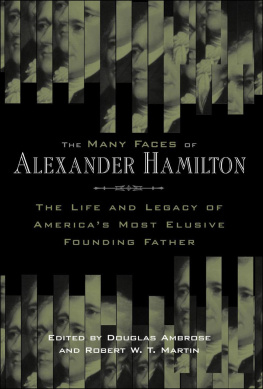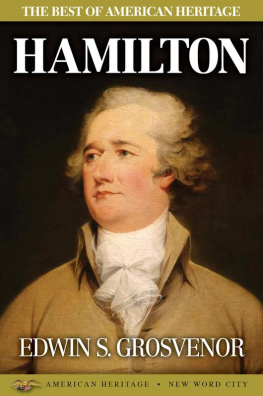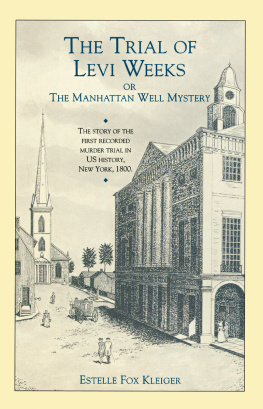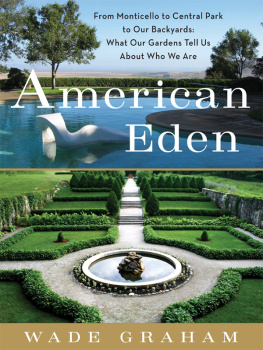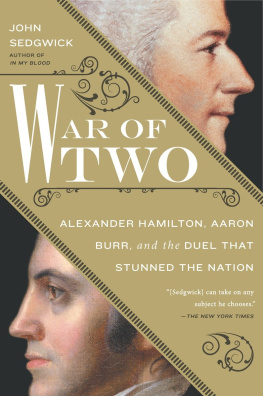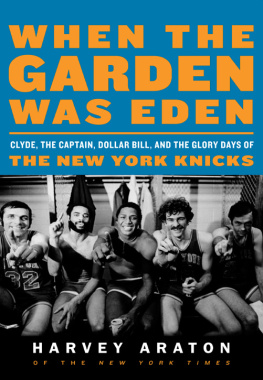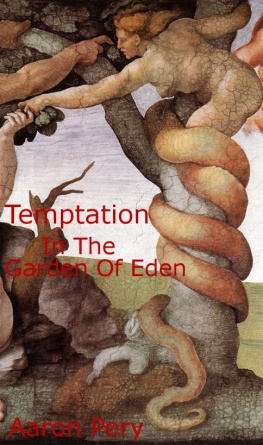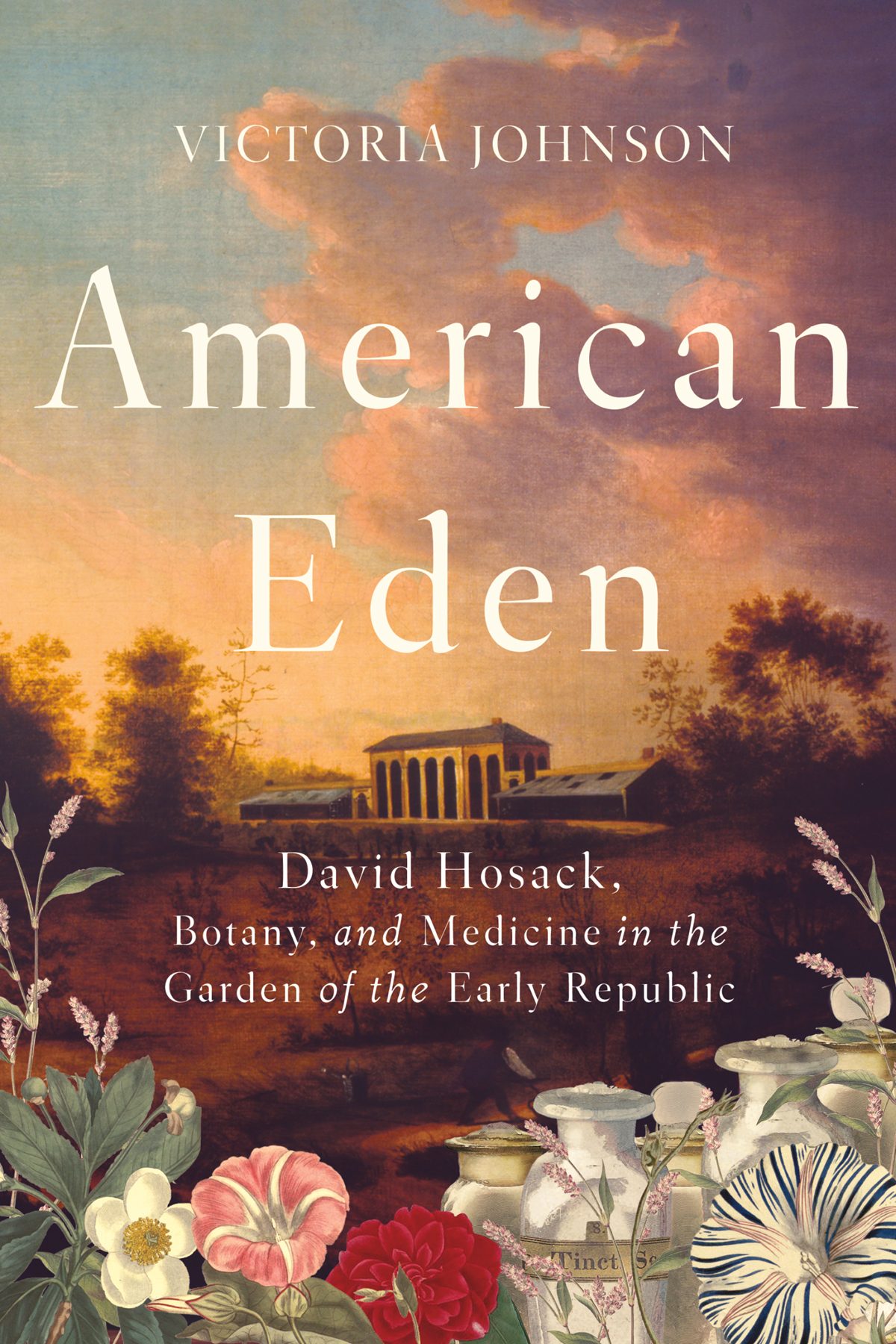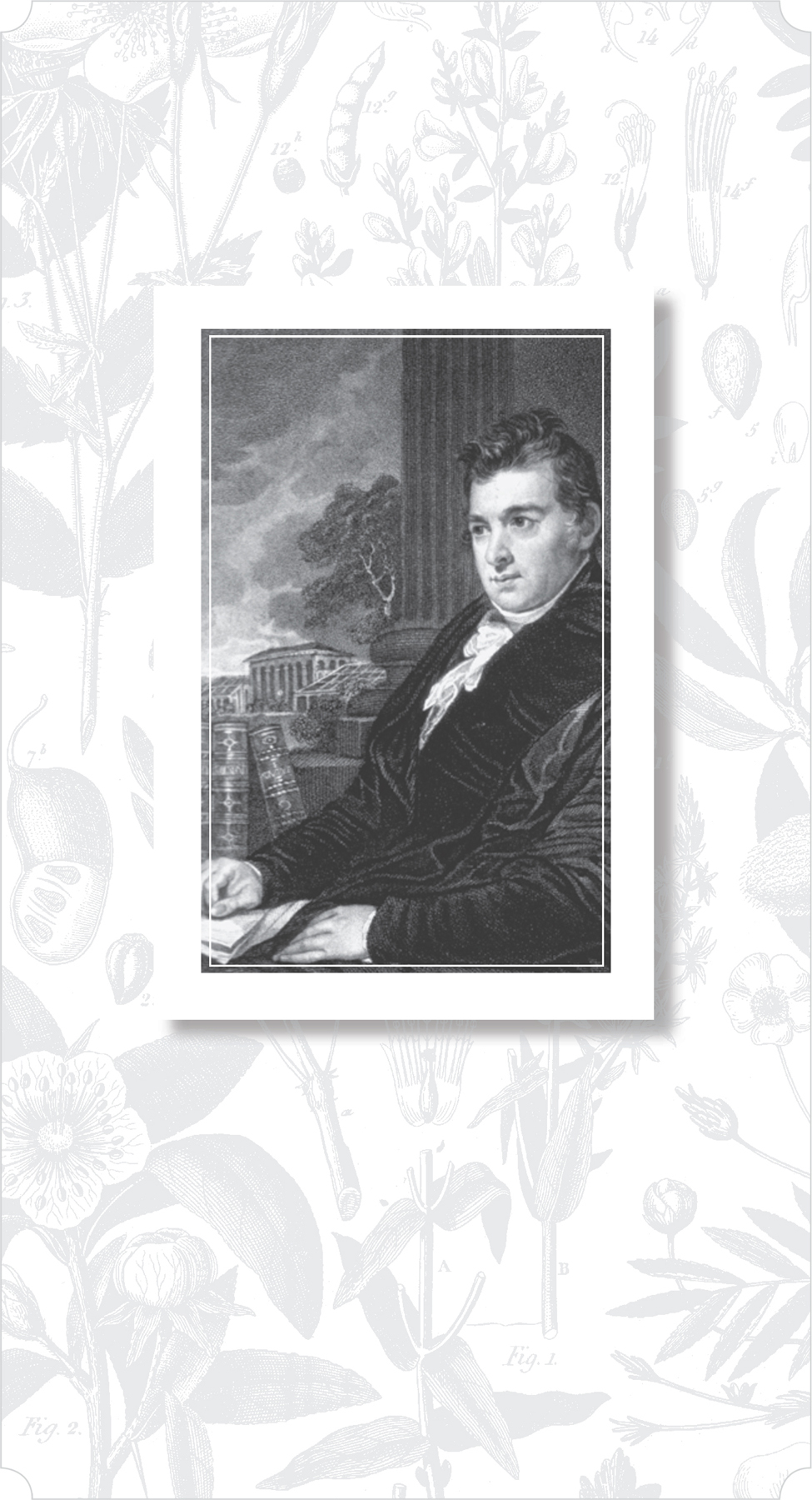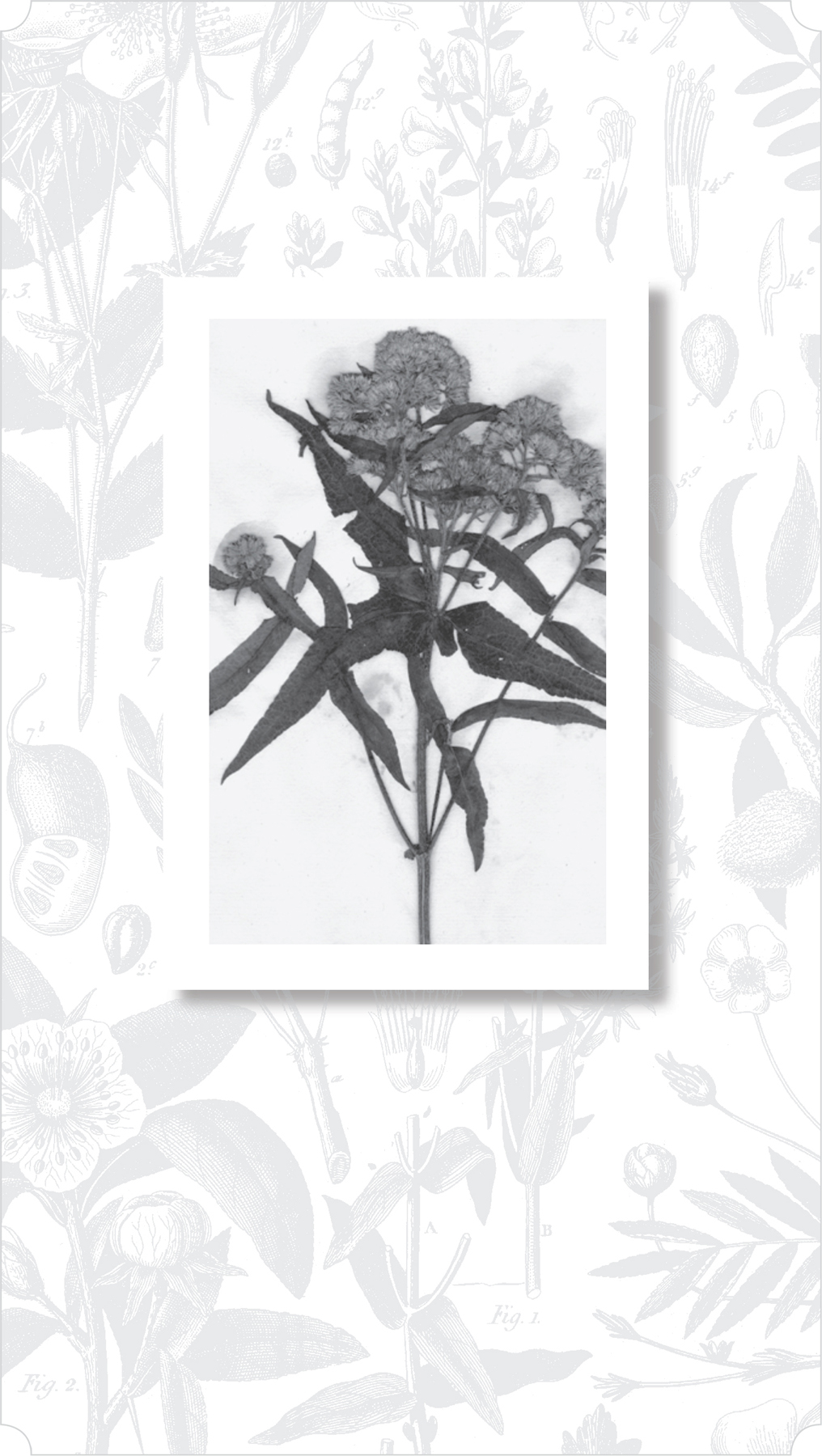Contents
Guide
Page List
For my parents, who love cities and gardens,
and for Rebecca, who tended this garden
Picture a sea dotted with sails, a lovely sweep of notched shoreline, blossoming trees on greensward sloping down to the water, a multitude of small, artfully embellished candy-box houses in the background....
ALEXIS DE TOCQUEVILLE,
NEW YORK CITY,
MAY 1831
CONTENTS

...
D AVID HOSACKS LAST NAME, WHICH IS OF SCOTTISH ORIGIN, was pronounced Hozzick by his contemporaries. The Elgin Botanic Garden was named for the town of Elgin, Scotland, and was pronounced EL-ghin. I have preserved the original spelling and grammar of every person whose words I quote in this book, unless otherwise noted. Any emotions or opinions I attribute to them come from their own writings.
During Hosacks lifetime, many of the plants of North America had not yet been identified or named by naturalists, so he sometimes drew on the European names of related species as he tried to identify his specimens. The scientific term for nonnative plants used by many botanists, both past and present, is exotic. I have generally preserved the names used by Hosack and his botanical associates for each plant mentioned in this book. Current names for a selection of these plants can be found at americaneden.org.
I discuss many remedies Hosack and his colleagues used in their medical practices in the eighteenth and nineteenth centuries, but this book is in no way intended as a treatment guide.
AMERICAN EDEN

S EPTEMBER 1797. THE BOY WOULD BE DEAD BEFORE DAWN. He was fifteen, more handsome already than his famously handsome father, who had turned back toward New York City when he received the news. At best, the boys father would arrive in time to hold his sons hand as the end came. At worst, he would arrive only in time to embrace his grieving wife. The young doctor in attendance had already sent her out of the death chamber.
The doctor was solidly built, neither tall nor short, with thick black hair that crowned a massive head. People often noticed his sonorous voice and his piercing eyes, which were so dark as to appear completely black. He carried himself with a trace of arroganceat least his rivals thought so. Friends detected in his ramrod bearing only boundless energy and sound principles. He was a man built to take command of a sickroom, or a funeral procession.
The doctors name was David Hosack, and he was just twenty-eight years old. He knew that his more experienced medical colleagues would try to bring down the feverwas it typhus? scarlatina?with cold cloths pressed to the skin. But that measure had already proved useless. As the boys father raced home, Hosack took one last, risky gamble. He chose heat instead of cold, drawing a steaming bath and mixing a botanical remedy into the watera bitter powder called Peruvian bark, made from the cinchona tree, native to the Andes. The bark, which was later discovered to contain quinine, had been used for centuries by the Quechua people to cure malaria before the Jesuits imported it to Europe in the 1630s. It had become a staple medicine first for European doctors and then for American ones, and although it was used far more often for malaria, Hosack hoped against hope that it would bring down the fever. Next he poured several bottles of alcohol into the bathwater to stimulate the circulation. After the boy had been lowered in, he sprinkled in smelling salts. At first, the thin body lay still in the steaming water, but within minutes, the boy began to regain his senses and his pulse quickened. Hosack swaddled him in warm blankets and carried him back to the bed, where he slept deeply for several hours before awakingdelirious once again. The doctor prepared another bath, and then another. The fever slowly receded. The boy would survive.
Hosack refused to leave the house that night, but he permitted himself to doze in a nearby bedroom after the hours of anxious effort. As he later recalled the scene, he bolted awake to find the boys father, Alexander Hamilton, at his bedside. Taking Hosacks hand, Hamilton said with tears in his eyes that he could not remain one moment longer in his own house without expressing his deepest gratitude. In that moment, Hosack became a trusted friend to one of the nations most famous and powerful men. But his medical intuition that night did more than forge a bond between a Founding Father and a young physician. It moved him one step closer to an idea he had quietly been nursing for three years. A few weeks after saving Hamiltons son Philip, Hosack picked up a quill and composed a letter to the president and trustees of Columbia College, where he was a professor of medicine and botany.
He meant with his letter to move the earth. It would take time, years of patience etched into twenty acres as his fellow New Yorkers showered him with both accolades and scorn. Finally orchards would arise, of apple, pear, and apricot. Carnations and daffodils would dot the lawns. Medicinal plantspoppies, chamomile, feverfew, ginseng, and dozens morewould grow in tidy plots and along shaded walkways. A glass edifice nearly two hundred feet long would stretch across the land, a magnificent conservatory to shelter the plants of the worlds deserts and jungles from icy New York winters. Hosack would gather into his more than two thousand species of plants, collected from correspondents around the globe and from the farms next door.
It was an American triumph: the first botanical garden founded for the new nation.
Because of his garden, Hosack became one of the most famous Americans of his time. His medical research there cemented his reputation as the most innovative physician in New York. When Alexander Hamilton and Aaron Burr needed an attending physician for their 1804 duel, they both chose David Hosack. Thomas Jefferson, Alexander von Humboldt, and Sir Joseph Banks sent Hosack plants and seeds for his garden and lavished praise on him. When the sixty-six-year-old Hosack suffered a stroke in 1835, newspapers from South Carolina to New Hampshire ran bulletins about his illness and offered prayers for his recovery. Even before this, he had been immortalized in paintings, in marble busts, on commemorative coins, and in the names of plant species. Some Europeans called him the Sir Joseph Banks of America. It was the highest honor imaginable for an American scientist.

HOSACK WAS BORN IN 1769 and grew up under the British occupation of New York City during the Revolutionary War. He came of age just when the newly independent nation was most in need of his energy, intellect, and prodigious talent for organizing other people. The Founding Fathers had secured American independence and framed a new government. Now it fell to Hosacks generation to that would guarantee the future health and prosperity of the Republic. Hosack devoted himself to this challenge his whole adult life.


